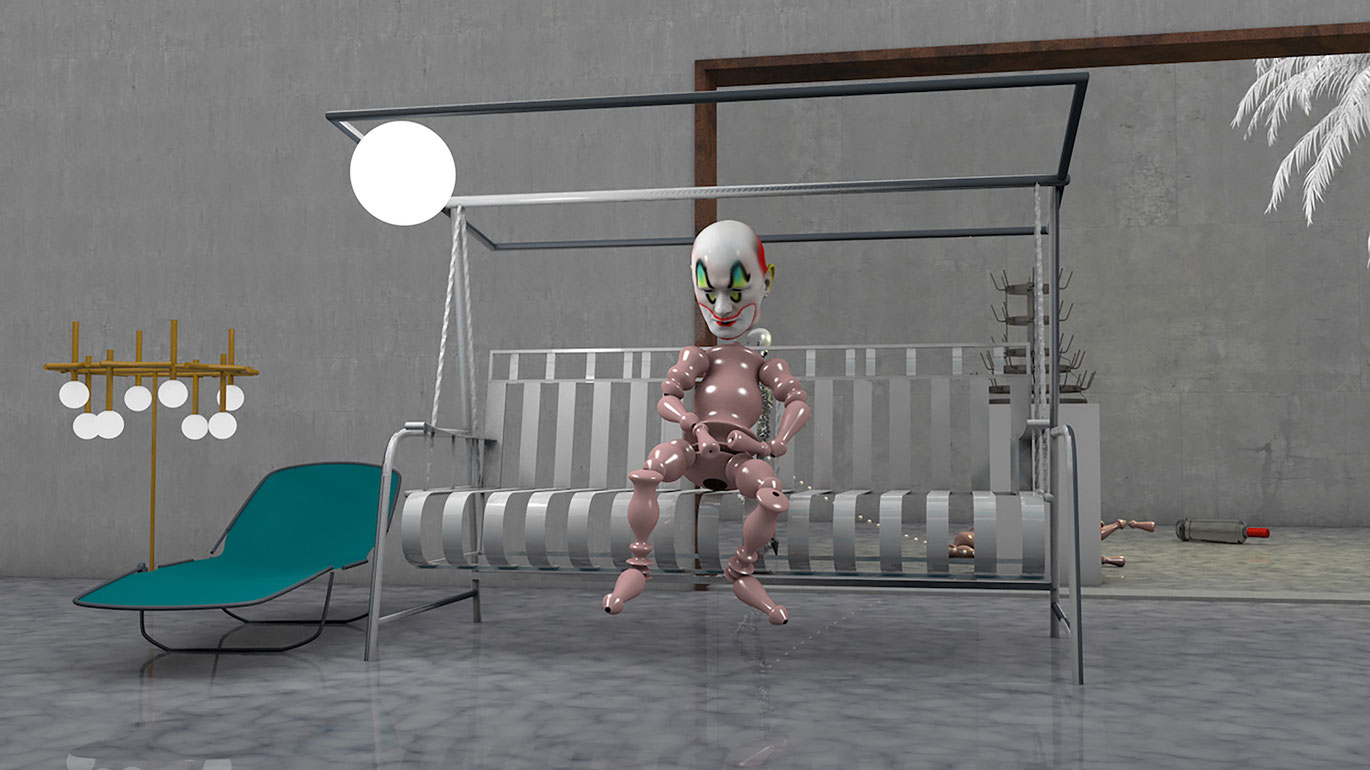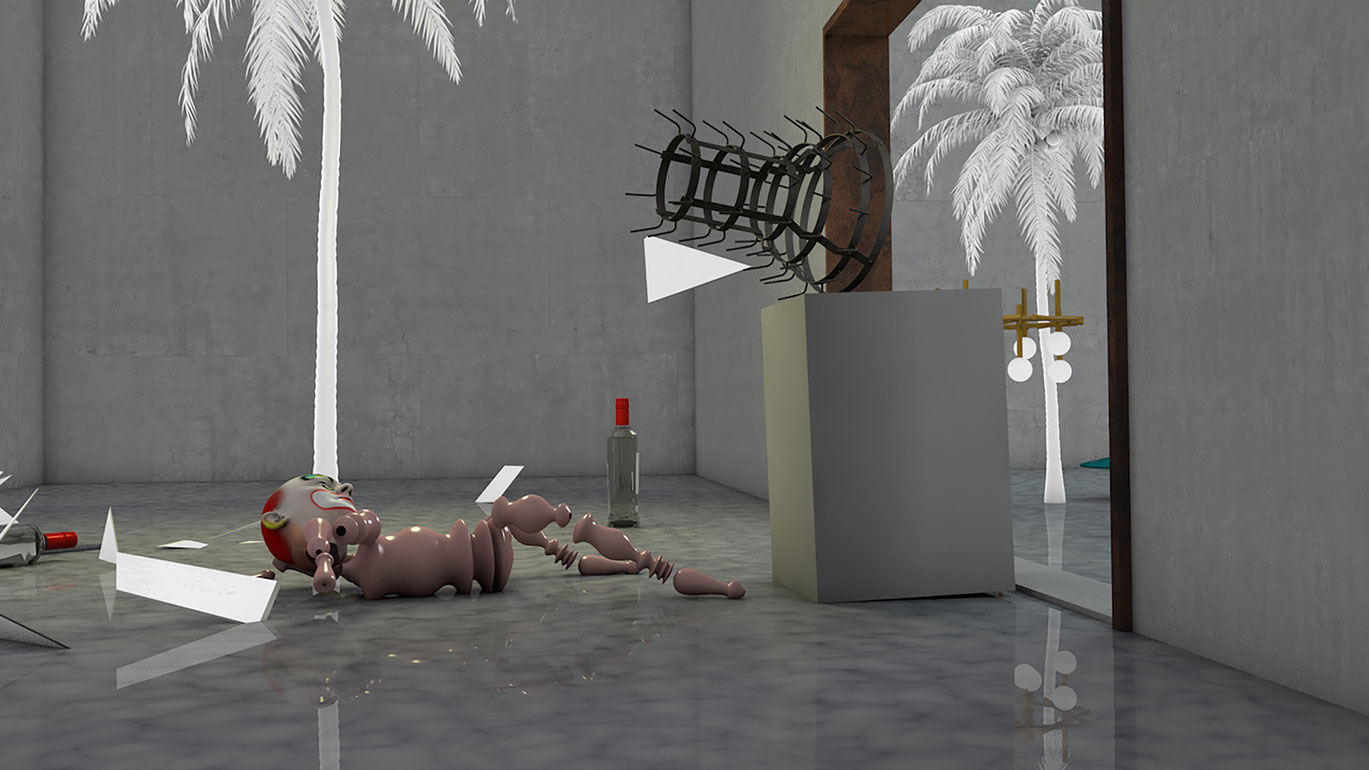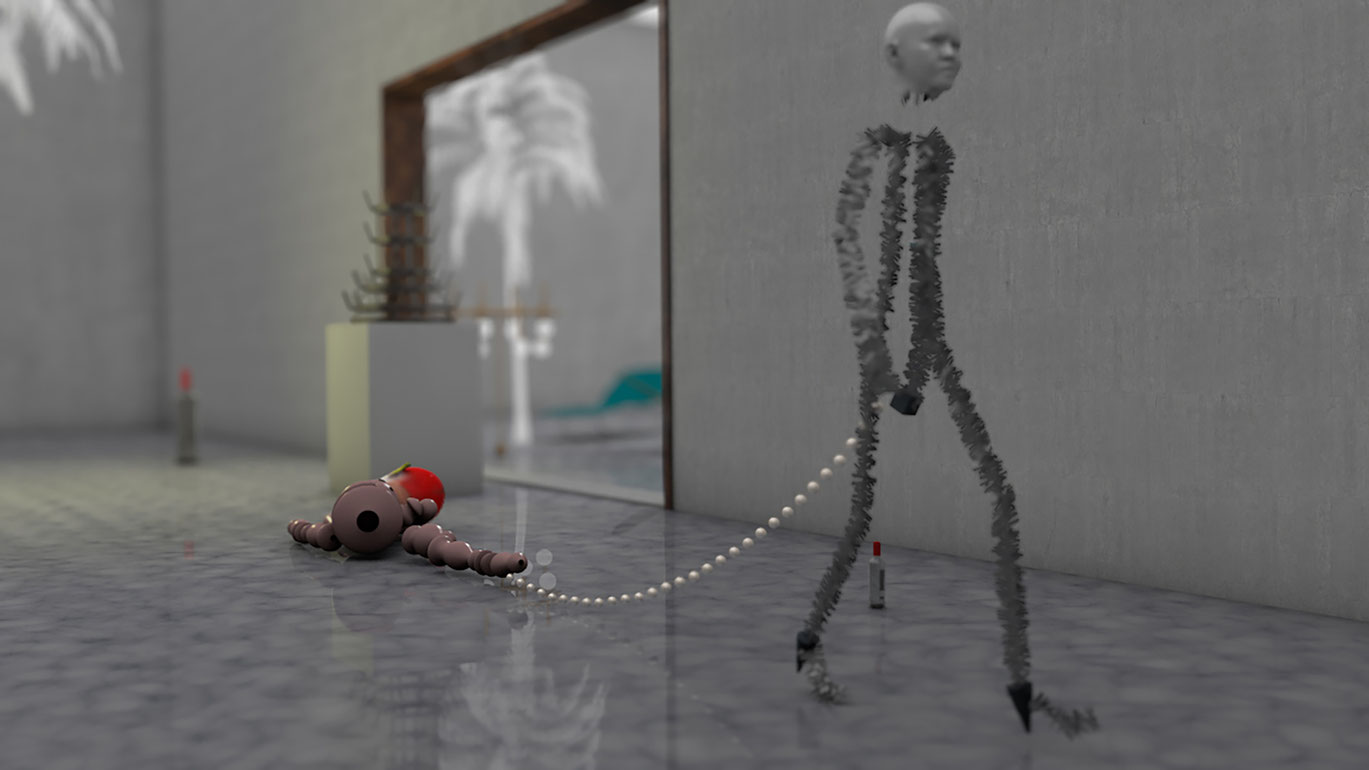Fallen
In his work, the artist Klaus Schuster doesn´t want to have a lot to do with what most of us so confidently call "reality." Rather than using digital 3D animation technology to create "true-to-life" images, he emphasizes the artificialness of his creations. Fragmentary figures with disturbing humanoid faces drift, sprawl, and crash through a virtual space that looks like a poorly designed leisure facility with palm trees, pool, and porch swing. They are genre figures; their gazes empty, expressions indicating a foul mood; their kinetics — with all their coolness — are programmed.
One of these phantoms drags along behind it on the smoothly polished floor, a type of horror clown with a loosely arranged body of cone-shaped limbs. A spiky sculpture that from afar recalls Marcel Duchamps porte-bouteilles-Readymade, is pushed from its podium just a few seconds later, in accurate action choreography, by a figure crashing into the space. At the same time, another toy clown slides into the indoor pool from the swing, on which he until then sat uninvolved, breaking through the pool´s white bottom, which shatters like glass, to land one level lower in the same setting to strike with a kick of a conic leg, the exhibition piece falling from the podium.
Palm trees, swings, human machines, and "uncanny" special arrangements are a part of Schuster´s basic vocabulary. In Fallen, crashes are celebrated, but spatial, narrative, and dramaturgic traps are also actually set, whereby the filmic work is extremely fluid, with clever perspectival switches and imaginary camera movements. What arises is a mobius strip punctuated with tone holes, a Freudian- and Lynchian-primed mystery loop. (Stefan Grissemann)
Translation: Lisa Rosenblatt
Fallen
2018
Austria
3 min



